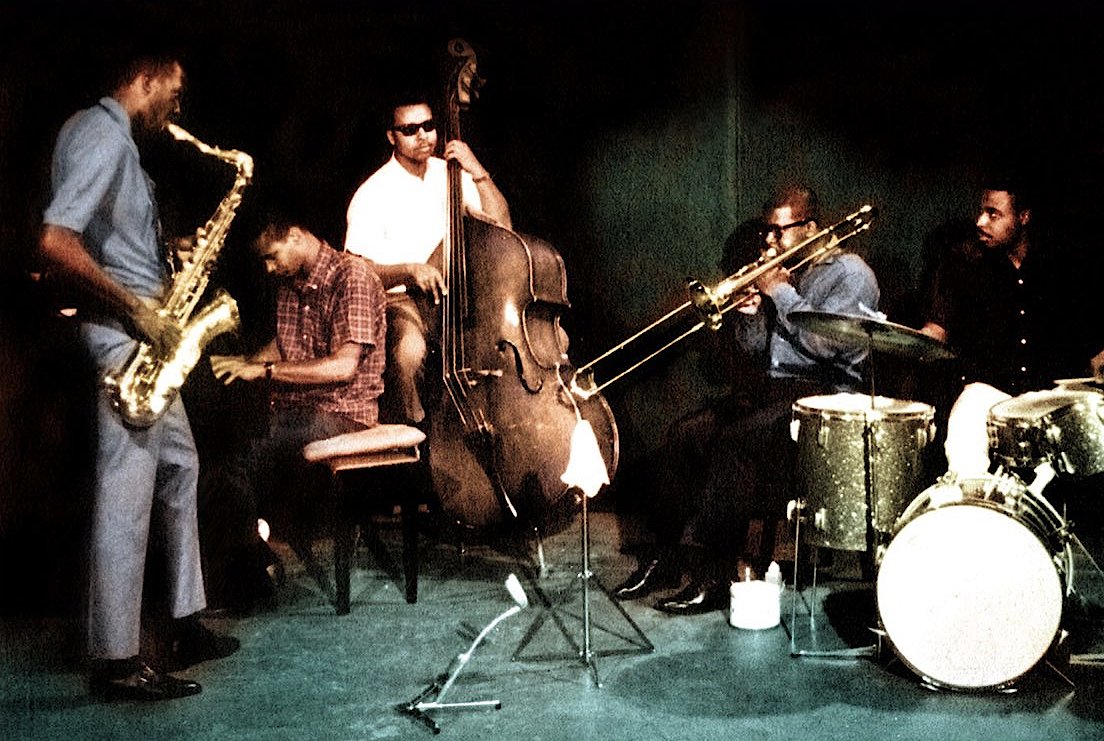The Jazz Crusaders / The Crusaders

 Buy Jazz Crusaders Music on Amazon
Buy Jazz Crusaders Music on Amazon 
Early Beginnings: The Birth of The Jazz CrusadersThe story of The Jazz Crusaders begins in Houston, Texas, in the early 1950s. A group of young, talented musicians—Joe Sample (piano), Wilton Felder (tenor saxophone), Stix Hooper (drums), and Wayne Henderson (trombone)—met during their high school years. They were deeply inspired by the jazz stylings of Art Blakey's Jazz Messengers and Horace Silver. Their mutual love for jazz, blues, and gospel created a bond that would lead them to form one of the most enduring groups in jazz history. After relocating to Los Angeles in 1960, the group officially adopted the name The Jazz Crusaders. This name signified their commitment to preserving and innovating within the hard bop tradition. Their early sound blended bebop, soul, and gospel influences, distinguished by Henderson’s trombone and Felder’s saxophone, which gave the group a distinctive front-line presence. 1960s: Early Recordings and Rise to ProminenceThe Jazz Crusaders released their debut album, Freedom Sound, in 1961 under the Pacific Jazz label. The album was well-received, marking the beginning of their unique blend of hard bop with soul and R&B undertones. Tracks like the title song showcased their ability to balance technical virtuosity with accessible melodies. Throughout the 1960s, the group released a string of critically acclaimed albums, including Lookin’ Ahead (1962), Tough Talk (1963), and The Festival Album (1966). Their music resonated with audiences for its ability to bridge the gap between traditional jazz and the emerging soul and funk sounds. Their rendition of contemporary pop and soul hits further broadened their appeal, bringing new listeners to jazz. Transition to The CrusadersIn the early 1970s, as jazz evolved and began to incorporate elements of funk, soul, and rock, the group decided to modernize its sound and image. In 1971, they shortened their name to The Crusaders, reflecting their embrace of a broader musical spectrum. The name change marked a pivotal point in their career, signifying a shift from traditional jazz to a more fusion-oriented approach. The Crusaders signed with Blue Thumb Records and released Pass the Plate (1971), followed by Crusaders 1 (1972). Their integration of electric instruments, particularly Sample’s electric keyboards, and their incorporation of funk rhythms, marked the beginning of a new era for the band. 1970s and 1980s: Commercial Success and Musical InnovationThe Crusaders’ move to ABC Records (later MCA Records) brought them significant commercial success. Albums such as Chain Reaction (1975), Those Southern Knights (1976), and Free as the Wind (1977) solidified their reputation as pioneers of jazz-funk. These albums featured a seamless blend of jazz improvisation, funk grooves, and soulful melodies. Their biggest commercial success came with the 1979 album Street Life. The title track, featuring the soulful vocals of Randy Crawford, became a crossover hit, reaching the top of the R&B and pop charts and earning a Grammy nomination. Street Life remains one of their most iconic songs, epitomizing their ability to create sophisticated yet accessible music. The Crusaders collaborated with prominent artists during this period, including B.B. King, Joe Cocker, and Steely Dan, further expanding their influence across genres. Later Years: Member Changes and LegacyAs the 1980s progressed, the band saw significant lineup changes. Henderson left the group in 1975, and Felder departed in the early 1980s, leaving Sample and Hooper to carry the Crusaders name. Despite these changes, the band continued to release albums and tour, maintaining their loyal fan base. In the 1990s, the original members reunited for a series of albums, including Healing the Wounds (1991) and Happy Again (1994), which rekindled the spirit of their earlier work. These projects reflected their enduring chemistry and passion for music. Influence and ImpactThe Jazz Crusaders/The Crusaders are celebrated for their ability to evolve while maintaining their core identity. They played a pivotal role in popularizing jazz-funk and influenced countless artists in jazz, R&B, and beyond. Their music bridged generational and cultural gaps, introducing jazz to broader audiences without compromising artistic integrity. LegacyJoe Sample, Wilton Felder, Stix Hooper, and Wayne Henderson are remembered as innovators who expanded the boundaries of jazz. Their contributions to music continue to resonate, and their recordings remain timeless classics in the jazz and fusion genres. Their legacy is one of innovation, adaptability, and an unwavering commitment to excellence, ensuring their place in the pantheon of great jazz ensembles. Notable AlbumsThe Jazz Crusaders Era
The Crusaders Era
Later Works and Reunions
|